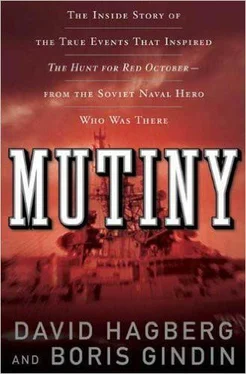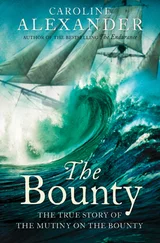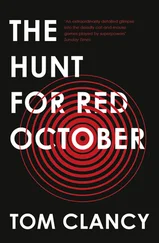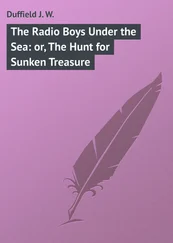Still, as Gindin is standing at the rail, everything that’s happened in the couple of days since they came up from Baltiysk adds up to an odd foreboding.
The Russian navy has been continuously at war for nearly its entire history and, since the end of WWII, preparing for the mother of all wars with the United States. A lot of ships have gone to the bottom since the late 1500s and early 1600s, and with them tens of thousands of sailors.
The Russians have fought the Swedes, the Danes, the Finns, the Italians, the English, the French, the Chinese, and the Japanese, but mostly the Turks, with whom they battled from 1575 until the end of 1917, when Vladimir Lenin’s new government ended the war, dissolved the Russian navy, and created the Workers’ and Peasants’ Red Fleet.
In the early days the Slavic Cossacks sailed in tiny ships called chaikas, which meant “seagulls,” because they could fly across the water so fast. Scarcely fifty feet at the waterline, the open boats could hold as many as seventy warriors, who would crouch down beneath the gunwales, which were bordered with twisted cane for extra buoyancy and protection. These were ships completely open to the weather, and the Cossacks terrorized the Ottoman Turks and Crimean Tatars no matter the season. Slavs and Russian sailors, then and now, were a tough lot not to be taken lightly.
An old Russian proverb sums up the three hundred plus years of war until the Bolsheviks took over: In Moscow they ring the bells often, but not for dinner.
But it wasn’t until the mid-1600s that the situation for the Russians really began to heat up. In fact, historians call those years the Time of Trouble, just before the Romanovs took over and imposed the death penalty against the sailors aboard any foreign ships caught off their northwestern Arctic coast in the White Sea, especially Dutch and British merchantmen hunting fur seals up there.
When Tsar Mikhail Feodorovich commissioned the first real warship to be built inside Russia, christened the Frederick, the floodgates were opened and Russian sailors began losing their lives in droves. On the ship’s very first voyage on the Caspian Sea, the three-masted Frederick, with 247 hands on board, was overcome by a fierce storm and the ship went down with all hands. They rang the bells in Moscow.
Of course that didn’t stop the Russians from building ships and sending men and boys to sea to make war on their neighbors.
In 1656 the Russian military attacked and took over a couple of Swedish forts and immediately started building ships on the spot to make war in the Baltic. But the Swedes were just too tough, and in 1661 Russia was forced to sign a peace treaty and give back the forts they had taken, plus all the ships they had built. This was at the cost of a few hundred more good Russian men and boys. Once again the bells in Moscow were rung.
Even that couldn’t hold the Russians back. They had the bit in their teeth, and the tsar concentrated next on the Volga River and Caspian Sea, where in two years four ships were built, including the twenty-two-gun galley Oryol, which means “Eagle,” only this time it was the Cossacks who turned rebellious, grabbed the ship, ransacked it, and sank it in the Volga.
It was about this time, near the end of the 1600s, when Peter Alekseevich became Tsar Peter I at age ten. Even at that tender age the new tsar was fascinated with ships, shipbuilding, navigation, and naval warfare, so a miniature shipyard, for which tiny replicas of famous Western warships were constructed, was set aside for him and his pals to stage their mock battles.
Peter I was hooked. As soon as he was old enough, he ordered a real shipyard be built in the White Sea, which almost immediately began cranking out warships. Next he turned his attention to the Baltic and the Black Sea in the south, built a couple of shipyards, and by the spring of 1696 two warships, twenty-three galleys, four fireships, and more than thirteen hundred small vessels were crewed and got ready to do battle against the Russians’ old friends, the Turks.
It’s not that the Russians or the Cossacks had anything against the Turks, except for Turkey’s strategic location in control of the very narrow Bosporus and even narrower Dardenelles. Beat the Turks, and Russia was free to break out into the Mediterranean Sea and, from there, the open Atlantic. The entire world would be theirs, something that was difficult to achieve from Arkhangel’sk, up in the Arctic, which at the time was their only port.
The first step was to take control of the Azov Sea, from which Russian ships would have access to the Black Sea. This was done by June of that year, with the help of forty Cossack boats. The bells were rung in Constantinople as well as in Moscow.
But in October the tsar ordered that a permanent well-stocked and well-funded Russian navy be created in the Sea of Azov. Peter I went down there and lived in a tent to be in command of the Russian navy, while Chief of the Admiralty Alexanter Protasyev oversaw the construction of the base and the ships, which was done by several thousand serfs under the direction of hundreds of shipwrights and officers imported from Western Europe.
In 1697 Peter I sent sixty of Russia’s young noblemen to Europe to study shipbuilding and navigation and went himself to Holland to study advanced nautical sciences while working as a common ship’s carpenter.
When he returned to Russia he was a certified shipwright, and he’d brought back hundreds of books, charts, tools, and even ship models from which the new Russian navy would be designed and built.
In 1698 he opened the Nautical School and Maritime Academy for future seamen and the Nautical School of Mathematics and Navigational Sciences in Moscow.
The very next year, a Russian fleet of ten ships of the line, armed with 366 guns and a crew of more than two thousand officers and men, plus two galleys and sixteen smaller boats, broke out into the Black Sea and headed toward Constantinople. The Turks were so impressed they surrendered without a shot ever being fired. It was one of the very few times that the bells did not ring in Moscow.
With the northern fleet set at Arkhangel’sk to take care of business on Russia’s Arctic coast and the southern fleet in the Black Sea to mostly keep the Turks at bay, Peter I turned his attention next to his second most hated enemy, Sweden.
Although the northern fleet had successfully defended the realm against the Swedes trying to attack over the Northern Route, the tsar figured the only way to beat them was to have a Baltic fleet. If he could pull that off, Russia would not only present a serious threat to Sweden but could also take a run at Poland, Lithuania, Latvia, and Estonia, not to mention Finland and even Denmark. The only problem was that Sweden had thirty-nine ships in the Baltic and Russia didn’t have one. Nor were the Swedes about to leave the Russians alone long enough to build such a fleet.
Thus in 1700 began the navy’s part in the twenty-year Great Northern War, when a fleet of seven Swedish ships attacked the Arctic port at Arkhangel’sk. The Russians not only beat them back but also followed them, capturing strategic Swedish territory and even a couple of Swedish ships that had tried to come up the mouth of the Neva River to St. Petersburg. The bells in Moscow rang again, but everyone who survived got a medal with the inscription: The unprecedented has happened. The Order of St. Andrew the Summoned was created.
Even more important, on May 16, 1703, Peter I ordered the building of St. Petersburg Fortress at the mouth of the Neva and Fort Kronshlot in the Gulf of Finland to protect a new admiralty on the left bank of the Neva where the Baltic fleet would be built.
Читать дальше












